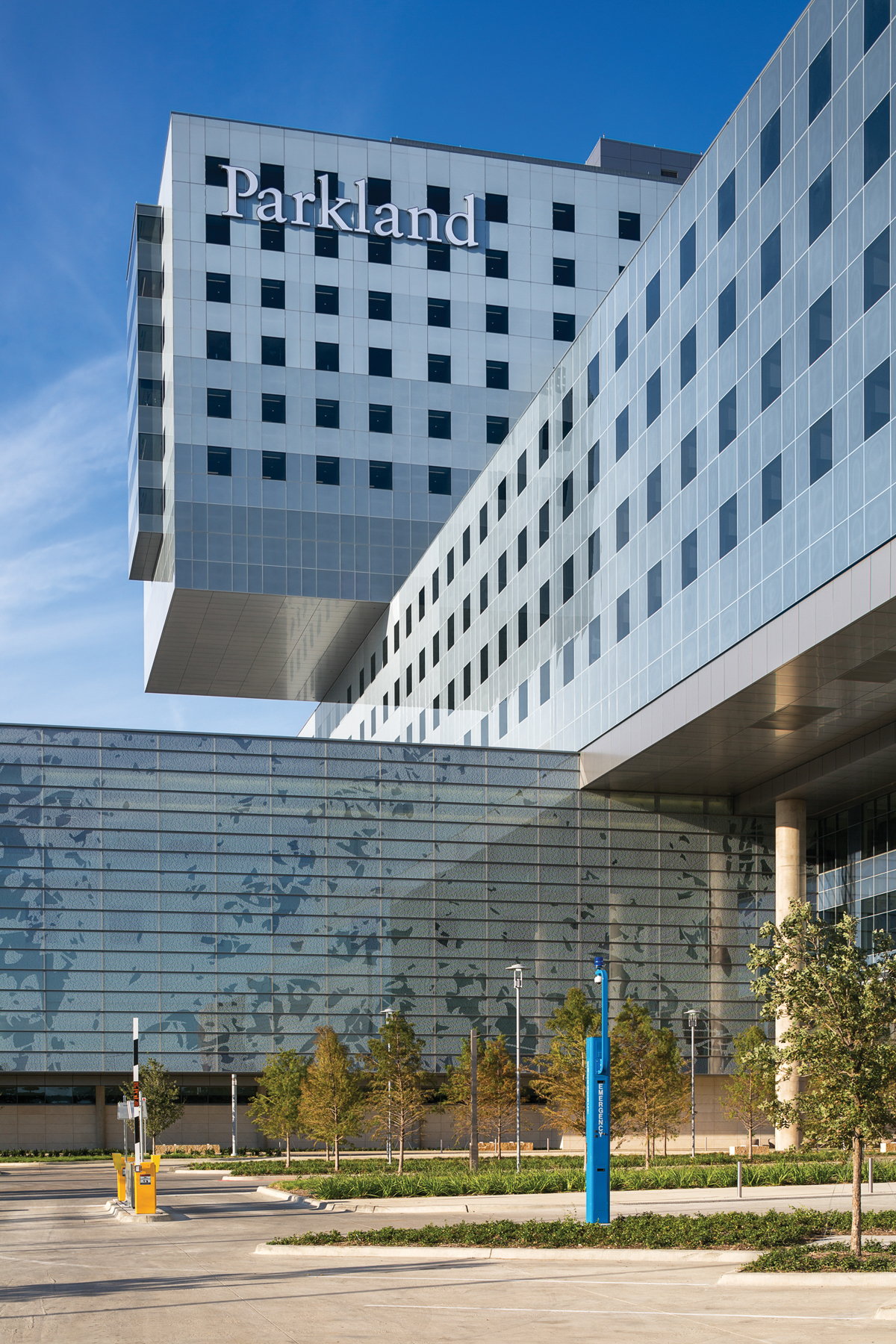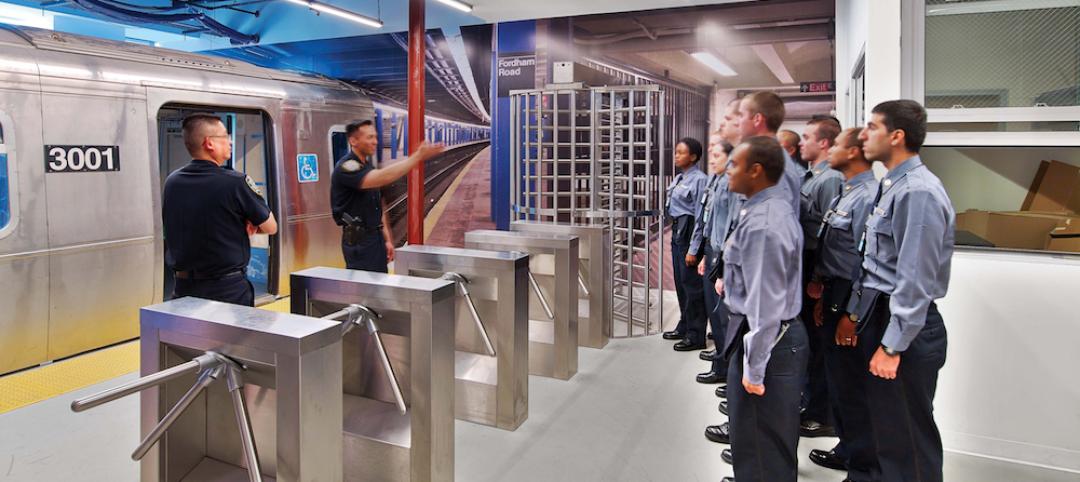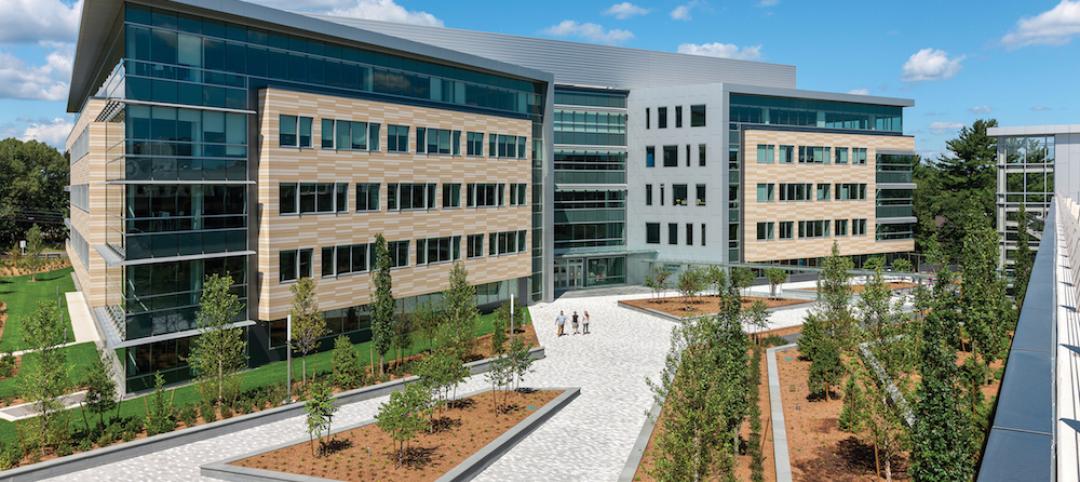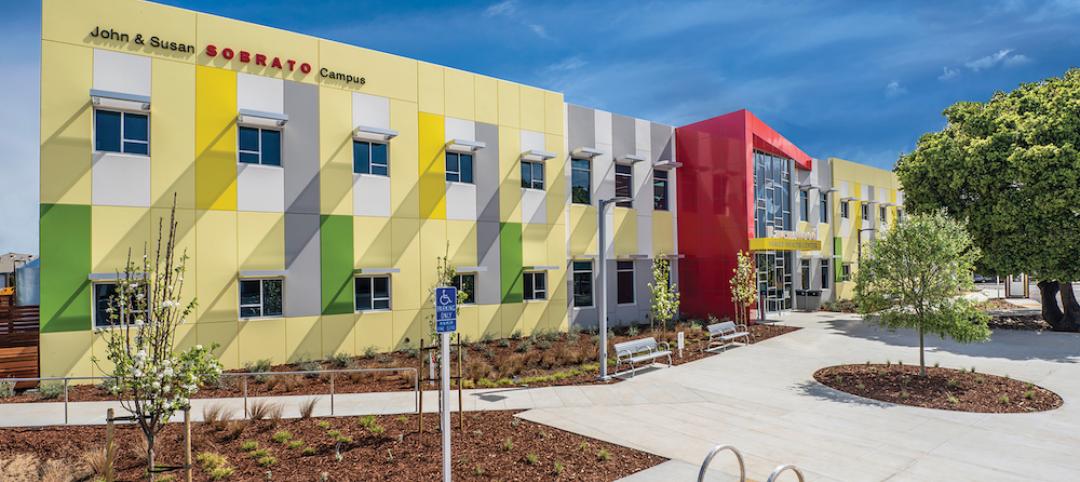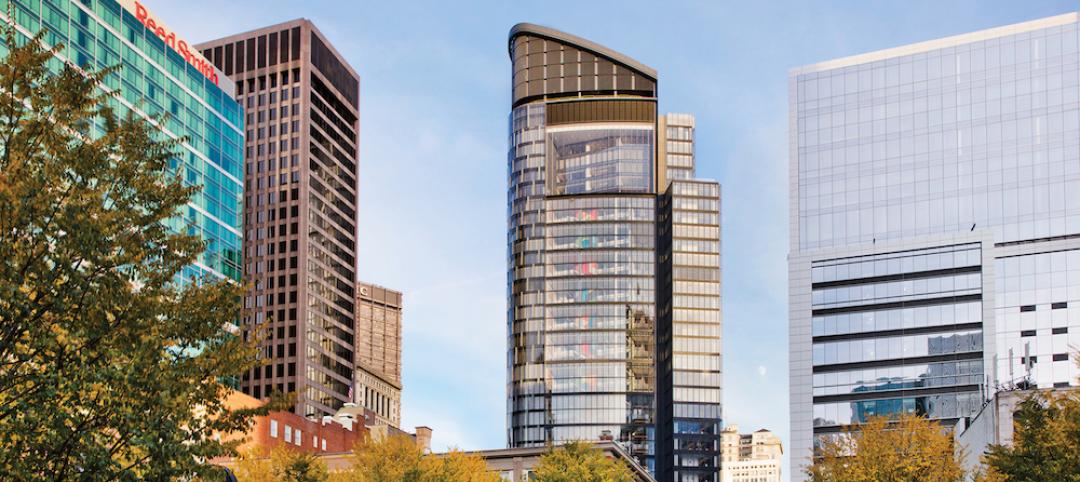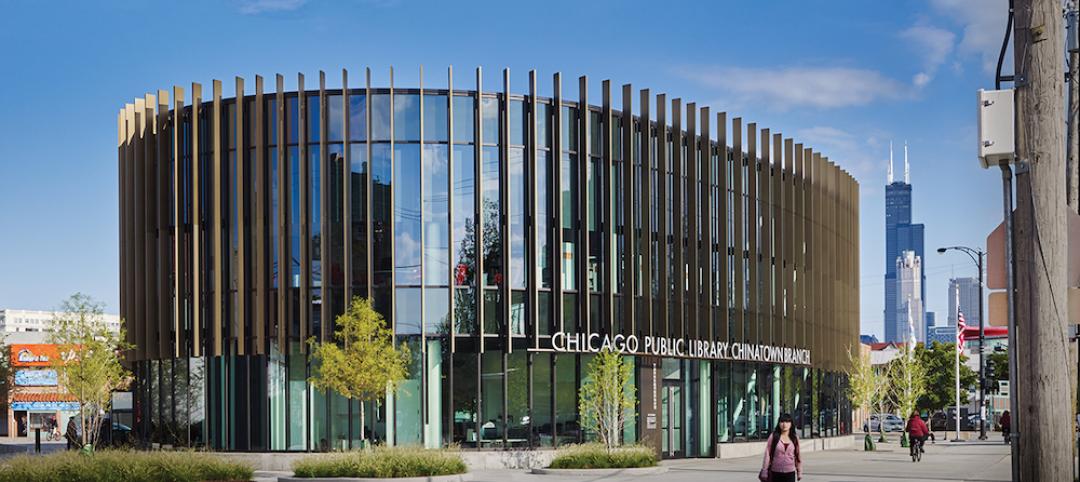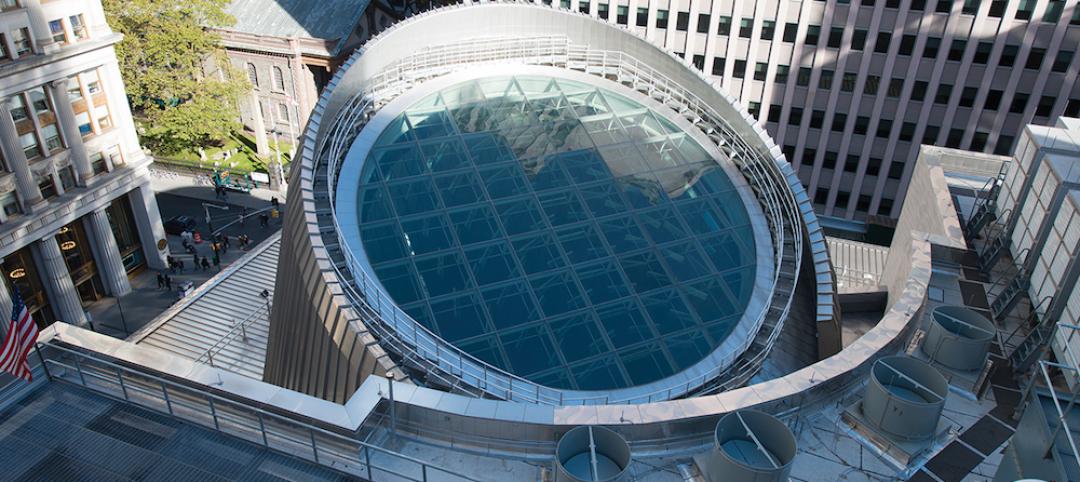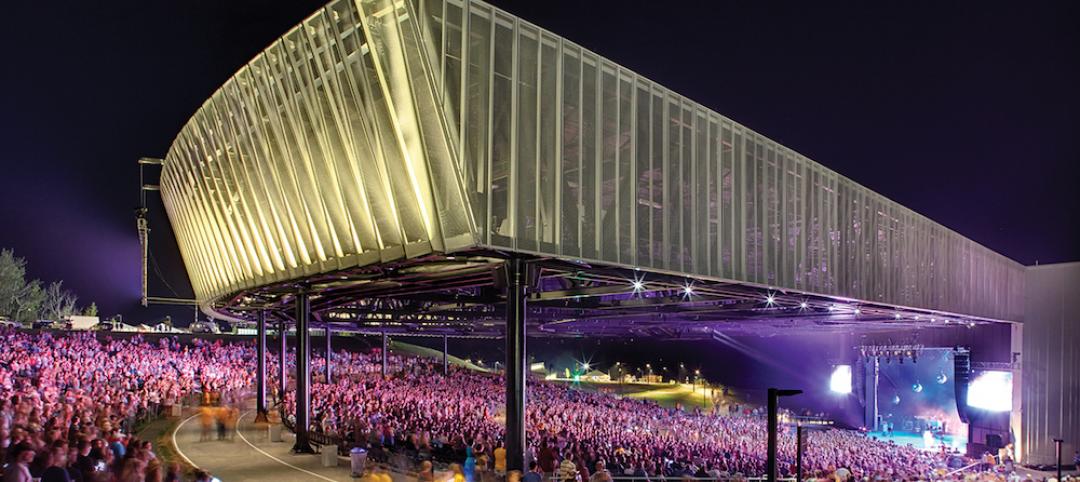The new Parkland Hospital is big. Check out the numbers: 862 private adult beds and 96 neonatal ICU beds. More than two million sf of space, and $1.27 billion in construction cost. Ten thousand employees. A hundred fifty minority/women/small business contractors. Five million man-hours in trades labor.
When it opens August 20, 30,000 visitors—speaking 77 languages—will stream through the new Parkland hospital daily, 140,000 people will seek care in its ED annually, and 16,000 babies will be born there every year.
As the largest public healthcare project in the country to be built in one phase, Parkland hospital “will serve as a standard for public healthcare development into the future,” said Lou Saksen, Senior Vice President for New Parkland Construction.
PROJECT SUMMARY
GOLD AWARD
Parkland Hospital
Dallas, TexasBUILDING TEAM
Submitting firm: HDR
Owner: Parkland Health & Hospital System
Architect, interior architect, master planner: HDR+Corgan Joint Venture
Programming consultant: Blue Cottage
Structural engineer: AG&E Structural Engenuity
MEP engineer: HDR
Civil engineer: Pacheco Koch
Electrical engineer (power): MEP Consulting Engineers, Inc.
CM: BARA (Balfour Beatty Construction, Austin Commercial, H.J. Russell & Company, and Azteca-Omega Group joint venture)GENERAL INFORMATION
Project size: 2.1 million sf
Construction cost: $1.27 billion
Construction time: October 2010 to October 2014
Delivery method: Collaborative project delivery (no contract)
MAKING THE COMPLEX SIMPLE
In 2008, Dallas County voters overwhelmingly approved a $747 million bond issue to replace the 1950s-era existing hospital. The design team of HDR+Corgan, a four-firm construction management group known as “BARA,” and programmer Blue Cottage were tasked with creating a master plan for the 64-acre medical campus and a building design for a LEED-NC 2009 Silver hospital. Ground was broken in May 2010; construction was completed last October.
What sounds like a relatively smooth execution belies the complexity of the project and the Herculean effort the Building Team made to make it seem easy.
Using what they called “collaborative project delivery”—an IPD with no contract—the team held visioning sessions to picture the future Parkland hospital from curbside to bedside. They brought in a consultant to coach them on teamwork. They co-located their workspace. They had estimators in place to make immediate evaluations of changes in costs. They set up a robust Patient & Family Advisory Council that had a real impact on program and design decisions.
They created three full-time “clinical liaison positions” staffed by veteran Parkland hospitial nurses, who acted as links to the medicine, surgery, and women’s services divisions. RNs “helped inform the entire design of the space,” said Kathy Harper, RN, MBA, EDAC, Parkland’s Director of Clinical Planning.
The team pulled out all the stops to solve a huge array of technical problems. They built mockups galore—a patient room, an OR, an NNICU room, a labor/delivery room—to gather feedback from hundreds of physicians, clinicians, and technicians. They prefabricated 750 bathroom units, 850 headboards, and three miles of MEP systems offsite.
When projections of ED use ballooned from a planned 100,000 visits a year to a possible 240,000, the team halted construction on the ED, redesigned it, and added a shelled bay of 12 exam rooms for future expansion.
When, in 2011, new hospital management asked for a “reexamination” of key design elements, the team enlarged ambulatory facilities on the main campus to meet anticipated demand. They reconfigured the radiology department into separate inpatient/outpatient units instead of a single unit as originally planned. They even redesigned the dietary kitchen so that patients could have 24-hour room service.
They standardized the ORs to allow for different types of equipment to be brought in, depending on the procedure. Conduits and cable trays were oversized. Floor-to-floor heights were bumped up to support future technologies.
According to Fred Cerise, MD, President/CEO, Parkland Health & Hospital System, “The legacy of this institution is cemented as an innovator in providing quality care for the medically underserved, as a leader in clinical expertise in specialties like burns and trauma, and as a pioneer of 21st-century transformational care processes.”
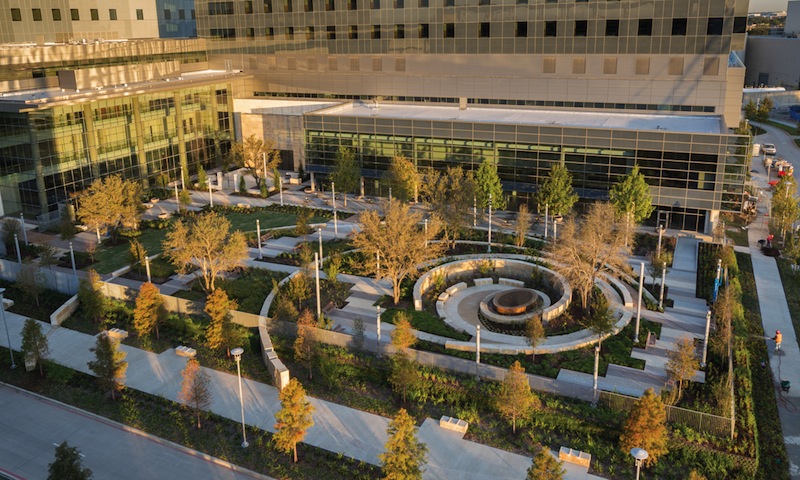 A curvilinear garden with drought-resistant plantings helps fulfill the hospital’s objective to “put the park back in Parkland.” Public transportation to the hospital comes via the Dallas Area Rapid Transit Green Line and the new Parkland Station and Bus Transit Center. Patients and families access the parking facilities from the interior of the site; staff access parking from the perimeter.
A curvilinear garden with drought-resistant plantings helps fulfill the hospital’s objective to “put the park back in Parkland.” Public transportation to the hospital comes via the Dallas Area Rapid Transit Green Line and the new Parkland Station and Bus Transit Center. Patients and families access the parking facilities from the interior of the site; staff access parking from the perimeter.
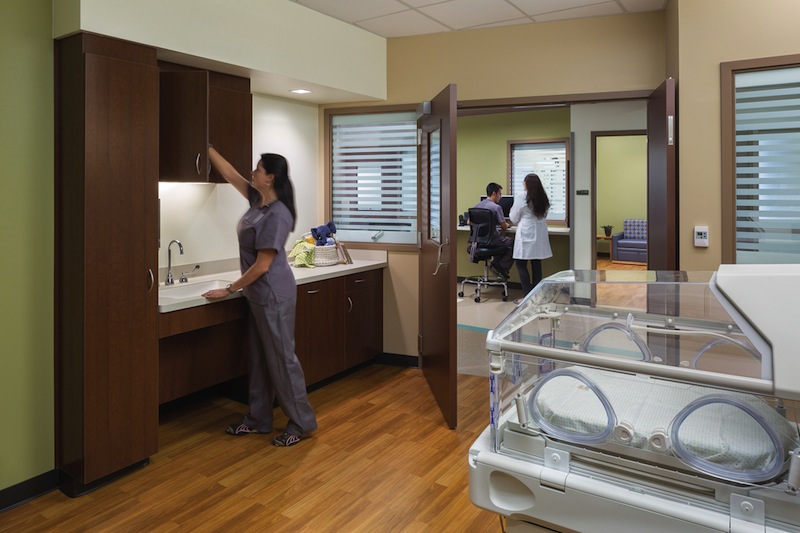 Evidence-based design and practices—exposure to natural light, decentralized nursing stations, healing gardens, noise reduction, soft lighting, etc.—play a significant role at Parkland. The neonatal ICU will be a test site for various EBD strategies, such as having an onsite pharmacy to reduce dosing errors. As a Pebble Project hospital, Parkland is engaged in multiple research projects, including wayfinding and reception-area seating arrangements.
Evidence-based design and practices—exposure to natural light, decentralized nursing stations, healing gardens, noise reduction, soft lighting, etc.—play a significant role at Parkland. The neonatal ICU will be a test site for various EBD strategies, such as having an onsite pharmacy to reduce dosing errors. As a Pebble Project hospital, Parkland is engaged in multiple research projects, including wayfinding and reception-area seating arrangements.
Related Stories
Building Team Awards | May 31, 2016
Gonzaga's new student center is a bustling social hub
Retail mall features, comfortable furniture, and floor-to-ceiling glass add vibrancy to the new John J. Hemmingson Center.
Building Team Awards | May 27, 2016
Big police academy trains thousands of New York's finest
The Police Training Academy in Queens, N.Y., consists of a 480,000-sf academic/administration building and a 240,000-sf physical training facility, linked by an aerial pedestrian bridge.
Building Team Awards | May 26, 2016
Cimpress office complex built during historically brutal Massachusetts winter
Lean construction techniques were used to build 275 Wyman Street during a winter that brought more than 100 inches of snow to suburban Boston.
Building Team Awards | May 25, 2016
New health center campus provides affordable care for thousands of Northern Californians
The 38,000-sf, two-level John & Susan Sobrato Campus in Palo Alto is expected to serve 25,000 patients a year by the end of the decade.
Building Team Awards | May 24, 2016
Los Angeles bus depot squeezes the most from a tight site
The Building Team for the MTA Division 13 Bus Operations and Maintenance Facility fit 12 acres’ worth of programming in a multi-level structure on a 4.8-acre site.
Building Team Awards | May 23, 2016
'Greenest ballpark' proves a winner for St. Paul Saints
Solar arrays, a public art courtyard, and a picnic-friendly “park within a park" make the 7,210-seat CHS Field the first ballpark to meet Minnesota sustainable building standards.
Building Team Awards | May 20, 2016
Pittsburgh's Tower at PNC Plaza raises the bar on high-rise greenness
The Building Team designed the 800,000-sf tower to use 50% less energy than a comparable building. A 1,200-sf mockup allowed the team to test for efficiency, functionality, and potential impact on the building’s occupants.
Building Team Awards | May 19, 2016
Chinatown library unites and serves two emerging Chicago neighborhoods
The 16,000-sf, pebble-shaped Chinatown Branch Library was built at the intersection of new and old Chinatown neighborhoods. The goal is for the building to unite the communities and serve as a catalyst for the developing area.
Building Team Awards | May 19, 2016
NYC subway station lights the way for 300,000 riders a day
Fulton Center, which handles 85% of the riders coming to Lower Manhattan, is like no other station in the city’s vast underground transit web—and that’s a good thing.
Building Team Awards | May 16, 2016
Upstate New York performing arts center revives once-toxic lakefront site
Early coordination, prefabrication, and judicious value engineering contributed to the accelerated completion of the Onondaga Lakeview Ampitheater, a Upstate New York design-build project.


